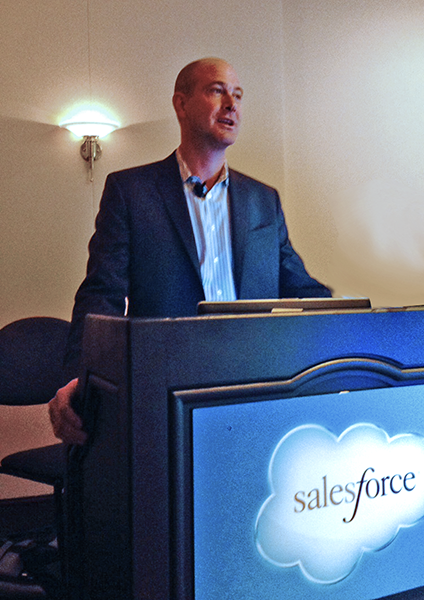Top 5 Takeaways from Revenue’s Dreamforce Presentations for Inside Sales and Marketing
Those of you who attended our sold out Dreamforce sessions helped make this the most exciting conference for us to date! In both sessions, our CEO, Howard Brown, revealed some of the ways that call metrics and contextual data are already transforming the way that businesses interact with customers. For those of you who weren’t able to make it, we thought we’d recap some of the most important points that Howard discussed.
 Here are the top 5 takeaways from our Dreamforce sessions.
Here are the top 5 takeaways from our Dreamforce sessions.
1. Tracking Call Metrics is Vital to Inside Sales Success
Many companies are undergoing a migration to inside sales. In order to stay competitive, it’s imperative that inside sales managers have moment-to-moment visibility into their reps’ performance. By tracking call metrics in real time, managers can identify what’s working and what isn’t.
For example, tracking a metric such as the number of outbound by rep per day can enable a manager to see whether top performing reps are making more calls each day than underperforming reps. Reps that aren’t hitting quota can be trained to solve customer pain points faster in order to call more leads every day.
2. Seven Key Call Metrics for Inside Sales Managers
Howard’s first Dreamforce session was entitled 7 Key Call Metrics that Will Accelerate Sales Revenue. In the session, he revealed the metrics that inside sales managers should be tracking. Here they are:
- Number of outbound calls by rep per day
- Call disposition per rep by day (e.g. how many calls resulted in appointments, busy signals, disconnected numbers, etc.)
- Number of calls per lead—are all leads receiving the attention they need?
- Number of unanswered calls
- Lead response time—are reps following up fast enough?
- Average call rating by marketing campaign—Revenue.io enables inside sales reps to rate calls on 1-5 stars so marketers can see, in real time, which campaigns are driving the most effective calls
- Wins by rep by campaign. Which reps are actually sealing the deal? Are certain reps better at closing deals generated by specific campaigns?
3. Call Metrics Help Sales Managers and Marketers Predict the Future
Nearly half of companies don’t hit their quarterly revenue targets. However, tracking call metrics in Salesforce.com gives inside sales managers the ability to perform predictive analysis to better gauge how much revenue each rep will close per quarter. This gives managers the chance to course-correct, giving the option to either replace laggard reps with more successful ones or provide additional coaching to help them meet their goals. Likewise, tracking which marketing efforts are actually driving leads, opportunities and revenue closed over the telephone enables marketers to make smarter budgeting decisions, empowering them to invest more in efforts proven to drive ROI.
4. Call Tracking Isn’t Just for Marketers
In Howard’s second session on Integrated Call Tracking, he revealed how call tracking has changed, and now boasts the potential to influence sales workflow in real time. While call tracking started out as a way for marketers to see which channels were driving the highest volume of calls, by integrating call metrics into Salesforce.com, marketers can now view which efforts drive the most phone leads, opportunities and ROI. But as Howard pointed out, this is really just the beginning. Call tracking opens the door to route calls to specialist based on any ad or promotion. It also enables sales reps to view intelligent talking points based on lead sources to know why customers are calling before they even pick up the phone.
5. Context is King
Howard’s sessions both focused on the importance of providing reps with contextual data about prospects. Phone calls are almost always important moments, as a recent Google Study proved (61% of consumers surveyed said they call businesses when they are ready to buy). The more data that sales reps can view within the context of calls, the more successful they can be. When a customer calls for the first time, a sales rep might only be able to see a limited data set such as the caller’s geolocation, which promotion or keyword triggered the call, and talking points based on the referral source. However, in the B2B space, multiple calls are almost always required to close deals. Through the power of progressive profiling, B2B sales reps can gain more data about customers with each call. This contextual data can include content preferences, event attendance, a prospects’ social media streams, news about the prospect’s company and more. The contextual data can help inside sales reps to have smarter conversations, solve pain points quicker and, at the end of the day, close more revenue.
